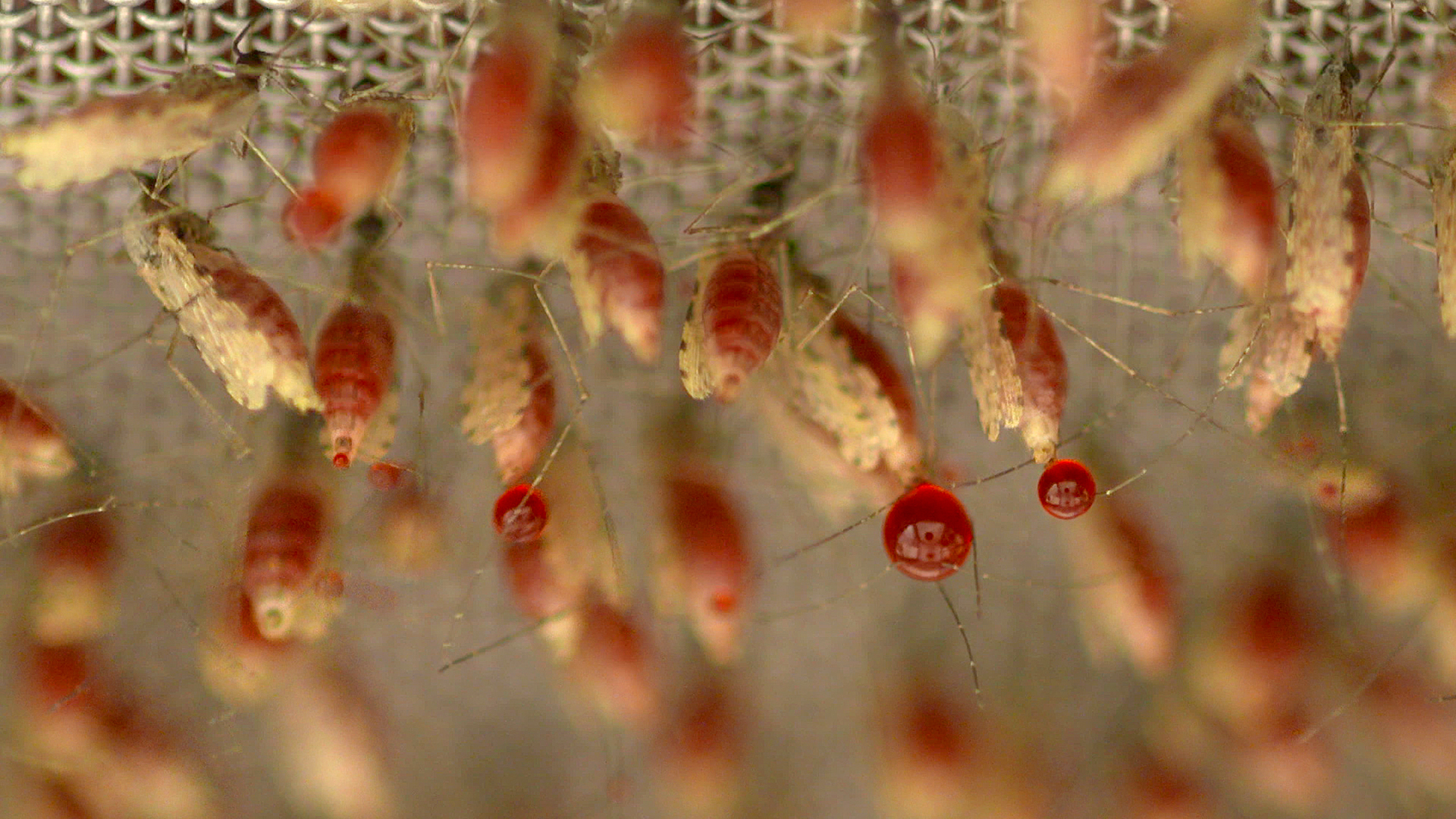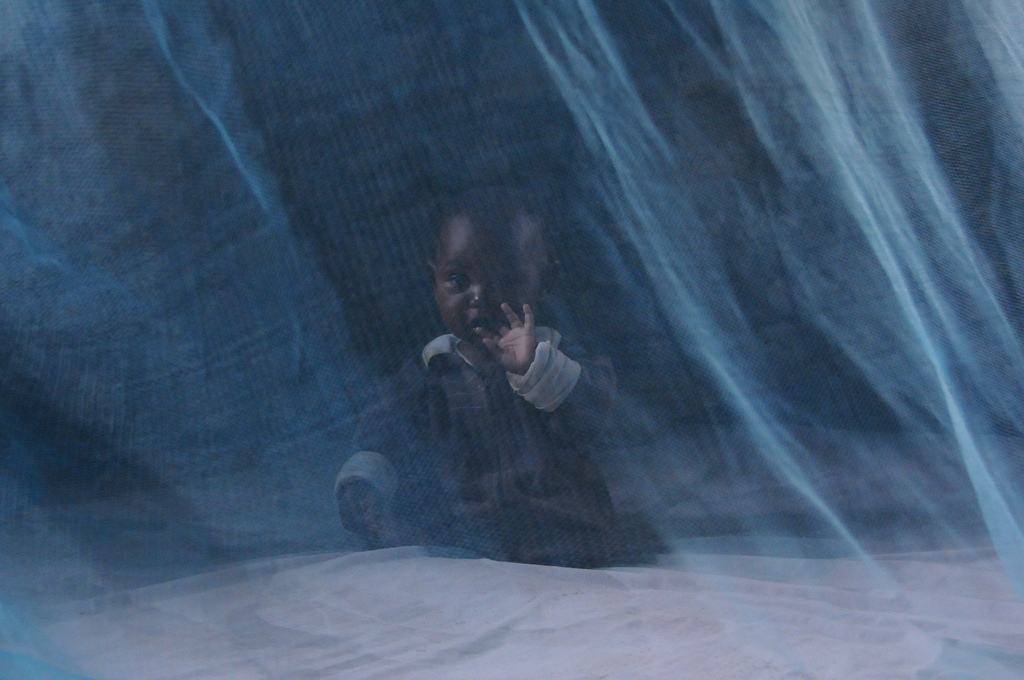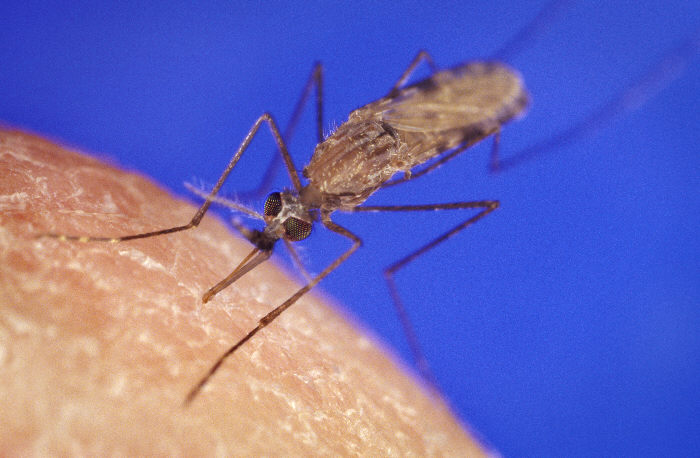
Sciences & Technology
Waiting for the Tiger mosquito

The discovery of the huge diversity in malaria genes that disguise the parasite from our immune systems shows we’ve been fighting malaria as if it were measles, when we should think of it as flu
Published 28 April 2017
A new genetic fingerprinting technique has for the first time shown the huge genetic diversity of the malaria parasite, one of nature’s most persistent and successful human pathogens.
The technique proves a previously untestable hypothesis proposed more than 20 years ago and opens up new ways of thinking about how to tackle this cunning killer.
And key to that understanding is changing the way we think about malaria – that it is not like measles and more like the flu.

The University of Melbourne and the University of Chicago have led an international research collaboration to collect blood samples from 641 children, aged 1 to 12 years from Bakoumba, a village in Gabon, West Africa and the genetic fingerprints of parasites from 200 infected children. Remarkably, every child was infected with malaria parasites that had a different fingerprint from the parasites in every other child.
These results validate the ‘strain hypothesis’ first proposed by Professor Sunetra Gupta and Professor Karen Day, who is the lead researcher on this latest project, which is published in the journal PNAS.
In 1994 Professors Gupta and Day, both then working at Imperial College London and later the University of Oxford, proposed that the malaria transmission system may be organised into a set of strains based on diversity of the genes that code for the surface coat of the parasite. If true, this strain diversity could explain why people can be re-infected with malaria many times over.
It has taken until now for Professor Day and her collaborators to develop and optimise the mathematical and laboratory techniques to finally address this hypothesis.

The malaria parasite is a single-celled microorganism (known as a Plasmodium) that infects red blood cells and is transferred from human to human via mosquitoes. It has been infecting people for tens of thousands of years, and, according to the World Health Organisation, in 2015, nearly half of the world’s population remained at risk of malaria.
Over the past 20 years, Professor Day’s team has developed a way to genetically fingerprint malaria parasites from small amounts of blood based on what are called var genes. Every parasite has approximately 60 of these var genes but only uses one at a time and can switch between the one it uses. These genes encode proteins that coat the surface of the red blood cells that the parasite infects.

Sciences & Technology
Waiting for the Tiger mosquito
The var genes are significant because they determine the ability of the parasite to disguise itself from the human immune system, and contribute to the virulence of the disease.
If the genes that encode the surface coat overlap between two parasites, such as you would expect in siblings that would share a maximum of 50 per cent of their genes, then when someone is re-infected, the immune system will recognise these malaria parasites and quickly purge them if they have seen the parent infections. But if there is little or no overlap in these genes, then the immune system will not recognise the malaria parasite as readily, leading to chronic infection.
Professor Day who, is now Professor of Population Science and Dean of Science at the University of Melbourne, and leads a research group at the University’s School of BioSciences and Bio21 Institute, says the study shows that “the parasite has evolved this enormous diversity with limited overlap between the sets of var genes likely so it can keep re-infecting the same humans.”
Professor Mercedes Pascual, an ecologist at the University of Chicago, describes this as “the parasites forming niches by diversifying. They compete with each other for hosts, and distance themselves from each other to invade the same population of humans, a limited resource.”
Professor Day says current malaria control programs do not target the diversity of the parasite.
“With malaria, we attack something that is conserved between all strains, but the problem is if you don’t get rid of all of the malaria parasites with current strategies, you have this enormous diversity that can allow the system to bounce back quickly to pre-control levels,” Professor Day says.

“The resilience of the system is coming from the diversity, so you’ve got to monitor how approaches to control attack diversity and not just the parasite per se.”
Interestingly, the theory of malaria control is based on malaria having no diversity and being like measles. You contract measles once and have life long immunity, whereas you can get malaria or the flu many times because there are multiple strains circulating.
“Malaria is like flu, but our fingerprinting results show that it is way more complicated,” adds Professor Day.
By analysing the var genes, the researchers came up with a unique identifier, or fingerprint, for each malaria strain that they call a var code.
“Looking down the microscope you would have said all of the infections look the same, but when we did the fingerprinting genetically with this variant antigen gene system, we could see that every child had a different parasite fingerprint, and importantly, each fingerprint was highly unrelated to all other fingerprints.” says Professor Day.
Professor Day and her colleagues were surprised at this unrelatedness.

Sciences & Technology
Trapping malaria in a gene net
“Malaria has sex as part of its lifecycle, every time it goes through a mosquito. And so, because the malaria parasite mates you would expect to find related parasites that we might call parents, siblings, cousins and aunts and uncles in the population,” she says.
Dr Yael Artzy-Randrup, a theoretical ecologist from the University of Amsterdam, recently published theoretical results supporting these findings in the journal eLife.
“Even with very high levels of sex between parasites, their competition for available hosts can be so intense, that really only very unrelated parasites would be fit enough to survive”, Dr. Artzy-Randrup explains, “and here we have a structure where highly related parasites were not detected.”
“Malaria is similar to flu in that humans can be infected multiple times by different malaria parasite variants. However, in contrast to the flu, the situation with malaria is much more complex. With malaria, at any given point of time there is a high diversity of variants coexisting even in very small human populations, while in flu, variants usually replace each other, and people will only be infected by one variant at a time”, Dr. Artzy-Randrup adds.
After waiting 20 years to get their results, the researchers suffered a setback in 2012 when Hurricane Sandy cut the power to Professor Day’s laboratory at New York University, destroying samples that represented months of work. The team was eventually able to recover and continue its work, and Professor Day says that compared to some of her New York colleagues, she got off lightly.

Once the team had assembled all the data, they had to assure their scientific peers – many of whom were sceptical of the strain hypothesis – that the pattern of diversity and unrelatedness they were seeing was not just through random chance.
Professor Pascual and Dr Artzy-Randrup tested the results using statistical and computational techniques that are inspired from the analysis of complex systems in ecology, such as communities of species in ecosystems.
They found that the system was non-random, and the relatives were absent from the population.
Professor Pascual says the project is connected to a central question in ecology: what is the structure of diversity?
“We are asking this question for the ensemble of parasites within a population of Plasmodium falciparum, but it can also be asked for the ensemble of tree species in a rainforest.”
“It is an exciting time for bringing together quantitative analyses and deep sampling of biological systems in the field.”

Health & Medicine
The new battlefront in malaria research
Professor Pascual has worked on other aspects of the transmission dynamics of malaria, and says all models typically consider infections as all the same to a large degree.
“Our findings indicate that the enormous diversity of the parasite is structured and that we need to consider the implications of this structure for intervention, and possibly develop a different way to model transmission in malaria altogether,” she says.
The researchers continue to collaborate and are now var code fingerprinting and modelling malaria strains in larger human populations through time.
Dr Kathryn Tiedje, a researcher in Professor Day’s laboratory at the University of Melbourne and one of the study authors, is currently looking at how control methods might impact the diversity of malaria.
“Will reducing the prevalence of malaria in any way reshape the var gene diversity, and can interventions also reduce the number of malaria strains in the population?” she asks.
Ultimately, the question they all want to answer is - how can we defeat one of humanity’s most unrelenting enemies?
Banner multimedia: Paul Burston/Sarah Fisher
The paper, ‘Evidence of Strain Structure in Plasmodium falciparum Var Gene Repertoires in Children from Gabon, West Africa’ is published in PNAS, the Proceedings of the National Academy of Sciences. The team includes researchers from the University of Michigan, the University of Amsterdam, the University of Montpellier, New York University, the University of Chicago, and the University of Paris Descartes.